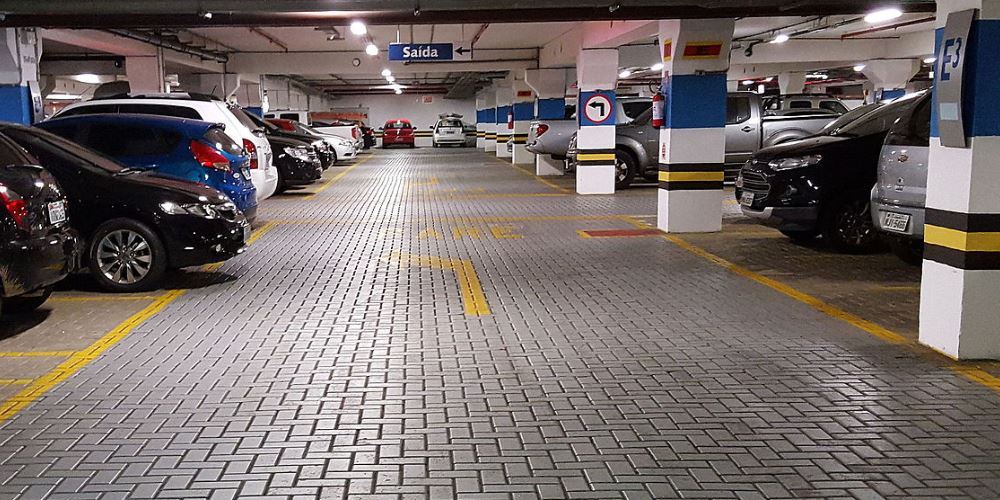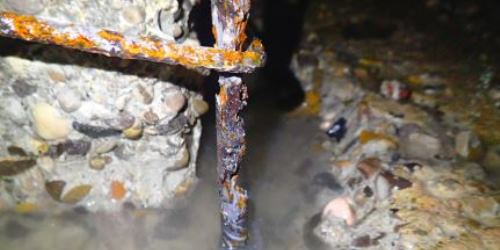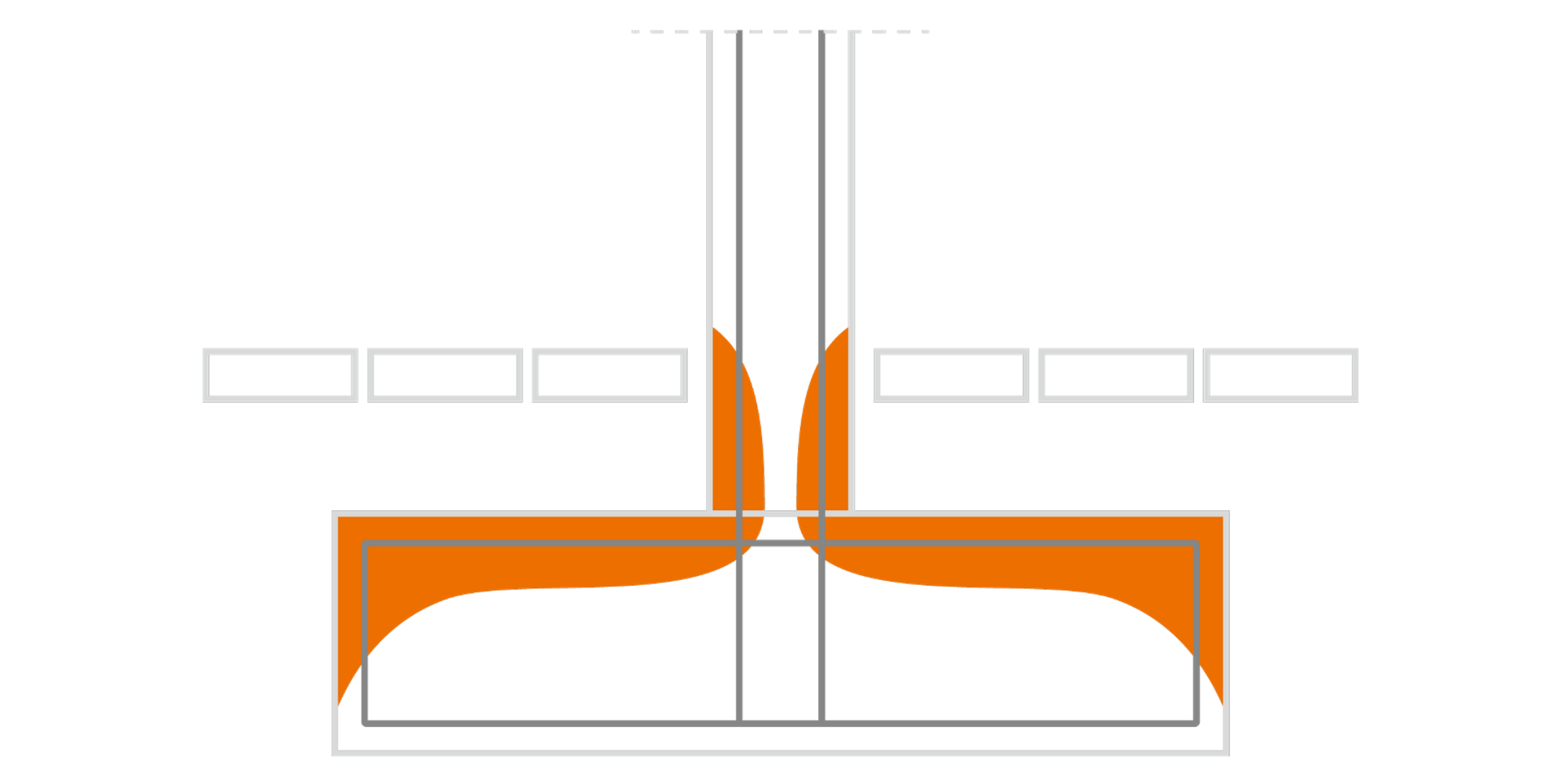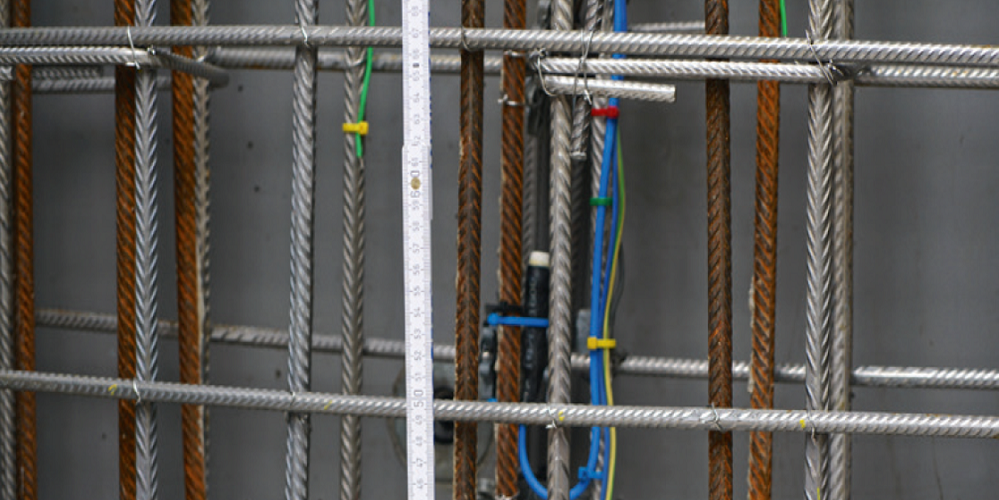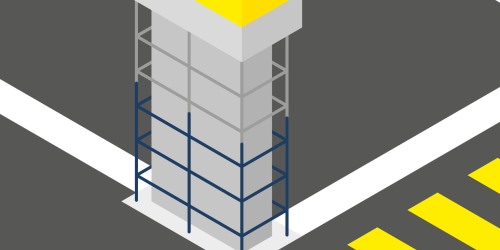STAINLESS REBAR FOR CAR PARKS AND UNDERGROUND PARKINGS
How our Top12 and UGIGRIP® stainless steels help you save money
In most countries an extensive use of de-icing agents in winter are not out of the ordinary. In Germany, up to 100,000 tons of de-icing salt are used daily in winter, which corresponds to approximately 0.5 tons of de-icing salt per kilometer in the event of a single ice rain event. With a tendency of increasing weather extremes, these numbers are likely to climb. The chlorides found in splash water and spray mist of these de-icing agents are the enemy of any steel reinforcement. Depending on their concentration, they lead to undesired corrosion on the reinforcing steel and as a result to costly repairs.
Chloride corrosion leads to high repair costs for parking garages and underground car parks
A single passenger car can drag along up to 7 liters of chloride-containing snow slush. Assuming the snow slush contains an average of 2M.-% chloride, this results in about 42 grams of chloride with every passenger car entering a car park. When cars are parked in underground garages, the slush thaws and the meltwater with a high chloride concentration can reach the neuralgic components. To protect the components from corrosion, either coatings or stainless reinforcing steel can be used.
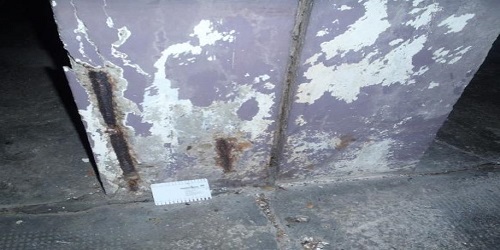
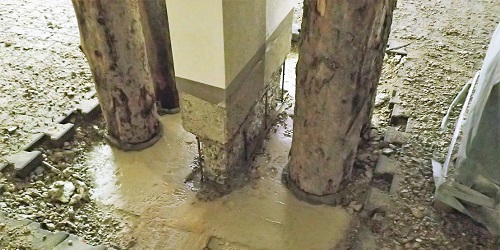
Chloride loads in paved parking garages
- Supporting pillars (above the upper edge of the pavement): The chloride load was above 0.5 wt.%/z in 65% of the components investigated, and even above 1.0 wt.%/z in 42%.
- Construction joint: In this area, 44% of all examined construction elements were found to be exposed to chloride loads of over 0.5 wt.%.
- Top of foundation: Even in the lower areas, chloride values greater than 0.5 wt.%/z were found in 28% of all components examined.
Source: C. Dauberschmidt, F. Becker: Neue Forschungsergebnisse zum Schutz von Bauteilen unter Pflasterbelägen. Beton- und Stahlbetonbau 113 (2018), Heft 10, Pages 737-745.
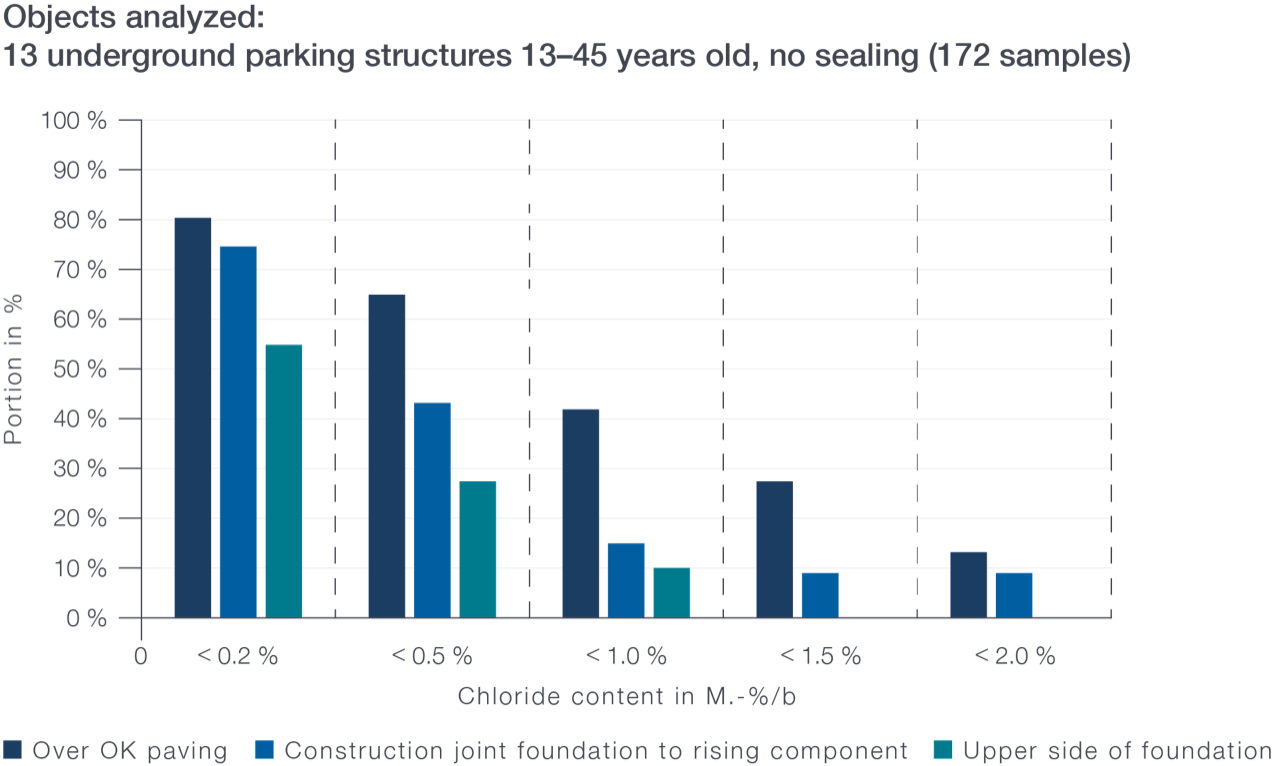
Cost reduction through the use of Top12 instead of conventional coating systems
Paved underground garages
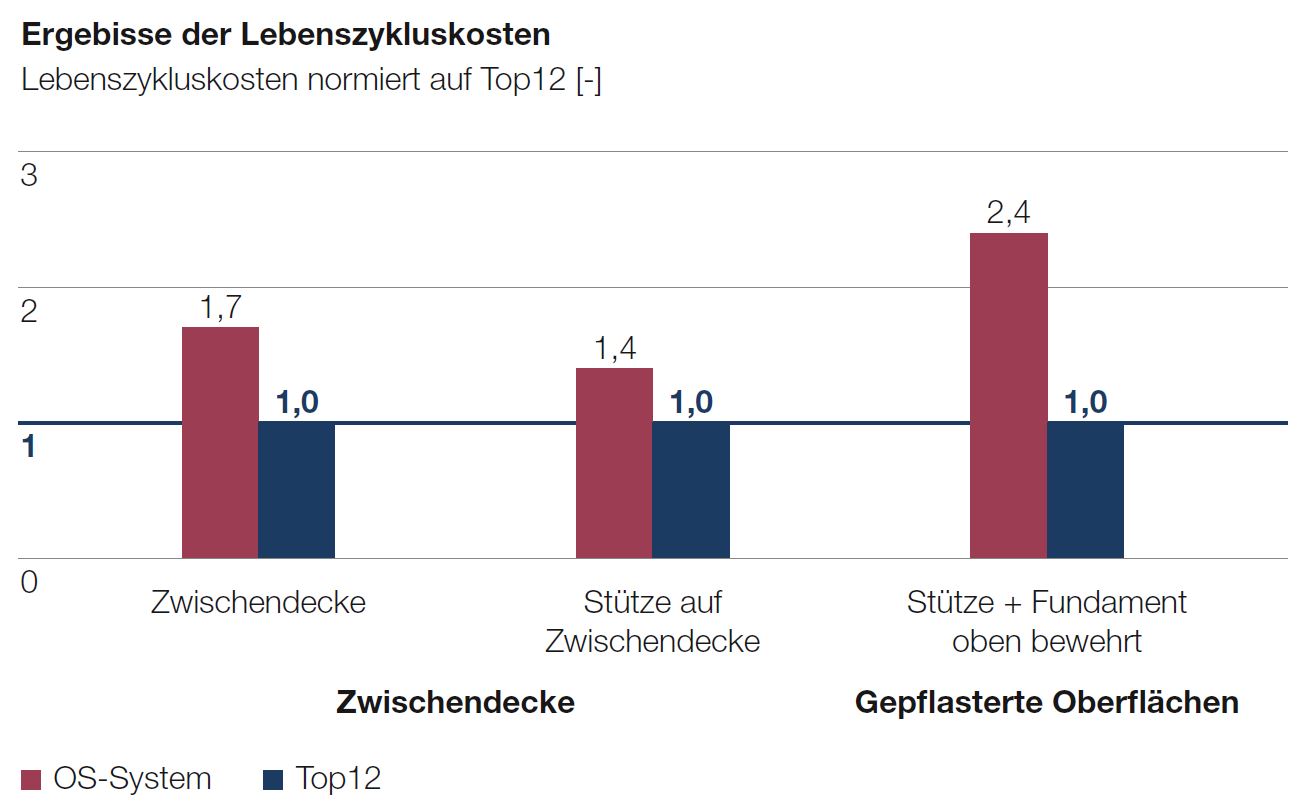
Source: A. Schießl-Pecka, A. Rausch (2019): Lebenszykluskosten für Parkbauten. Gutachterliche Stellungnahme 18-369/2. Ingenieurbüro Schießl Gehlen Sodeikat GmbH, 24.10.2019
Lowest life cycle costs for parking structures
The use of Top12 as a stainless steel reinforcement saves considerable costs compared to a coating throughout operating life. If no coating system is available, all associated follow-up costs during operation are also eliminated, i.e. cleaning, maintenance and repair costs due to necessary coating renewals. Comparing different design variants merely on the basis of manufacturing costs is therefore only a very short-sighted focus. In order to consider and compare variants holistically, not only the manufacturing costs but also at least the follow-up costs in use or during operation must be taken into account.
Taking manufacturing and operating costs (= life cycle costs) into account, the use of Top12 is the most economical solution over a service life of 50 years.
Pinpointing problem areas: avoid rebar corrosion and costly repairs
Click on the hotspots to see product recommendations
Corrosion risk: Choosing the appropriate steel grade
The comparative representation of the chloride resistances of the different concrete steels serves only as an overview. Decisive for the classification of the chloride resistance are the values for the critical corrosion-inducing chloride content (Ccrit), stated in expert opinions or comparable publications.
| Steel product | Concentration of chlorides [M.-%/z] in alkaline concrete at steel layer |
Concentration of chlorides [M.-%/z] in carbonated concrete at steel layer |
||||||||||||
| ≤ 0,5 | ≤ 1,0 | ≤ 2,0 | ≤ 2,5 | ≤ 3,0 | > 3,0 | ≤ 0,25 | ≤ 0,5 | ≤ 0,75 | ≤ 1,00 | ≤ 1,25 | > 1,50 | |||
| B500B | (1.4039) | |||||||||||||
| Top12 | (1.4003) | |||||||||||||
| UGIGRIP® | (1.4062; 1.4362; 1.4462) | |||||||||||||
| Corrosion risk with use of respective product | none | low | high | |||||||||||
Extreme chloride loads on ramps of underground car parks
In order to protect conventional reinforcing steel from high chloride loads caused by imported de-icing salts, ramps are often coated. The high mechanical loads caused by approaching and braking traffic, lead to high wear and tear on the ramps and thus high maintenance costs for the coating systems. This results in unplanned short maintenance cycles (usually 10-15 years), during which damaged coating systems have to be repaired or completely renewed at great expense.
By selective use of Top12 in the concrete surfaces, coating systems can be completely dispensed with, see variant A2 in the DBV information sheet "Parking garages and underground car parks". With low reinforcement contents, the Top12 variant is even cost-neutral compared to the usual coating. Any higher construction costs caused by Top12 are compensated for in the short term by the maintenance-free nature of the stainless reinforcing steel. Minimal life cycle costs are the result. Furthermore, access to all parking spaces remains guaranteed for the planned service life, as there are no blockages due to otherwise normal maintenance work.
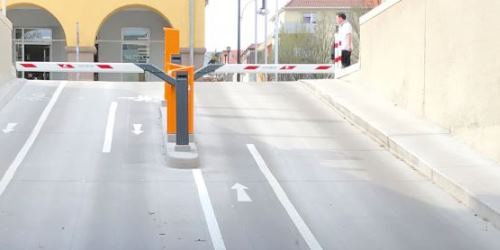
Special application of stainless rebar in paving car parks
Reference projects with our steel solutions
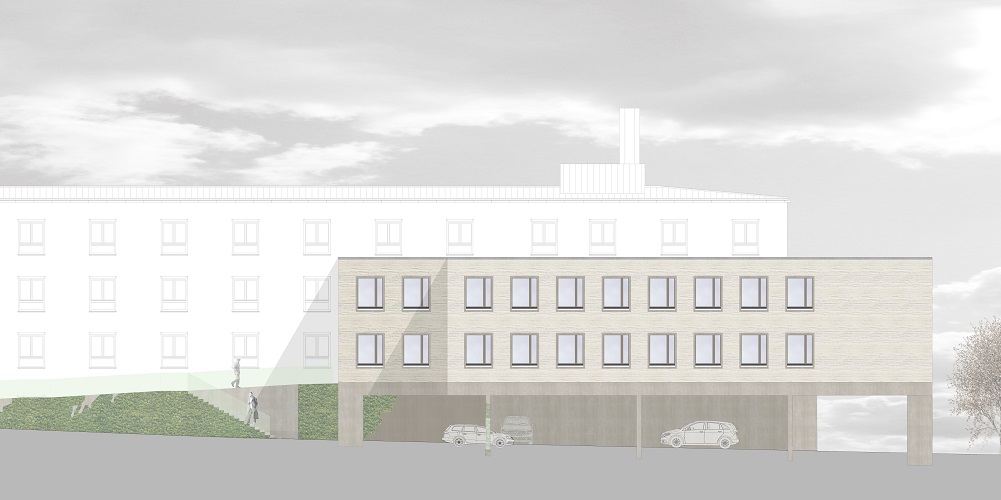
In the case of the reference property shown, a branch office for the Munich tax office was set up at the Donauwörth site in the course of a relocation by the authorities. For this purpose, an existing part of the building was demolished and then a paved covered parking area with 45 parking spaces was integrated into the new building. Top12 was only used in the column base and wall base areas. A coating system was completely dispensed with for the rising components.
Object: Extension tax office Donauwörth, DE
Application: Columns and walls of the paved parking garage
Product: Top12
Implementation: January 2019
> Download PDF file (German)
> Further parking reference examples

In the case of the reference object shown here, the approx. 22 m long ramp was also renewed in the course of a corrosion-related repair of the underground car park. During the repair work, Top12 steel was selectively used as the outer reinforcement layer in the roadway slab. Cracks at right angles to the direction of travel were subsequently protected locally. A coating system was dispensed with completely.
Object: Underground car park at the Schrammstrasse in Schweinfurt, DE
Application: Ramp
Product: Top12
Implementation: May to November 2017
> Download PDF file (German)
> More parking reference examples

